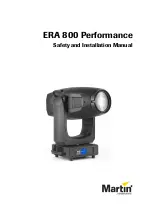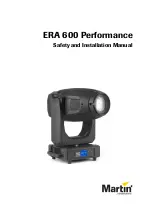
3
• Do not withdraw dilator from microintroducer sheath until sheath is within vessel to minimize the risk of damage to sheath
tip.
• Do not pull apart the portion of the sheath that remains in the vessel. To avoid vessel damage, pull back the sheath as far as
possible and tear the sheath only a few centimeters at a time.
• Do not cut guidewire to alter length.
• Do not insert stiff end of guidewire into vessel as this may result in vessel damage.
• Keep sufficient guidewire length exposed at hub to allow for proper handling. A non-controlled guidewire can lead to wire
embolism.
• Do not use excessive force when introducing guidewire or microintroducer as this can lead to vessel perforation and
bleeding.
• Never leave stylet or stiffening wire in place after catheter insertion; injury may occur. Remove stylet or stiffening wire and
T-lock (as applicable) after insertion.
• The stylet or stiffening wire needs to be well behind the point the catheter is to be cut. NEVER cut the stylet or stiffening
wire.
• Do not reinsert needle into IV catheter to minimize the risk of the needle damaging or shearing the IV catheter.
• Do not clamp extension leg when stylet or stiffening wire is in catheter to minimize the risk of component or catheter
damage.
Sherlock™ Tip Location System Precautions (Applicable to kits with Sherlock™ TLS Stylet)
• Temporary disruption of the cardiac rhythm device may occur if the Sherlock™ TLS stylet passes within 1 cm of the cardiac
rhythm device. Use care if placing the Sherlock™ TLS stylet on the same side as the cardiac rhythm device.
• The stylet or stiffening wire needs to be well behind the point the catheter is to be cut. NEVER cut the stylet.
• The detector identifies the position of the stylet tip. Ensure that the stylet tip remains inside and within 1 cm from the end of
the catheter tip. Failure to do so could result in catheter malposition.
• Never use excessive force to remove the stylet as it may damage the device.
Possible Complications
The potential exists for serious complications including the following:
• Air Embolism
• Bleeding
• Brachial Plexus Injury
• Cardiac Arrhythmia
• Cardiac Tamponade
• Catheter Erosion Through the Skin
• Catheter Embolism
• Catheter Occlusion
• Catheter Related Sepsis
• Endocarditis
• Exit Site Infection
• Exit Site Necrosis
• Extravasation
• Fibrin Sheath Formation
• Hematoma
• Heparin Induced Thrombocytopenia
• Hypersensitivity, anaphylactic or
anaphylactic-like reaction during
placement
1
, positioning
1
, flushing
2
of
catheter or cleaning of catheter exit
site
3
• Intolerance Reaction to Implanted
Device
• Laceration of Vessels or Viscus
• Myocardial Erosion
• Perforation of Vessels or Viscus
• Phlebitis
• Spontaneous Catheter Tip
Malposition or Retraction
• Thromboembolism
• Venous Thrombosis
• Vessel Erosion
• Risks Normally Associated with Local
or General Anesthesia, Surgery, and
Post-Operative Recovery
Insertion Instructions
1. Identify the Vein and Insertion Site
A.
Apply a tourniquet above the anticipated insertion site.
B.
Select and mark the vein based on patient assessment. Recommended veins are basilic, cephalic
and median cubital veins.
Caution: The PowerPICC® Provena™ Catheter features a reverse-taper catheter design. Placement
of larger catheters at or below antecubital fossa may result in an increased incidence of phlebitis.
Placement of the PowerPICC® Provena™ Catheter above antecubital fossa is recommended.
Caution: Avoid placement or securement of the catheter where kinking may occur, to minimize
stress on the catheter, patency problems or patient discomfort.
C.
Release tourniquet.
2. Patient Position / Catheter Measurement
A.
Position the arm at a 90˚ angle.
B.
For central placement, the recommended target tip location is in the lower 1/3 of the
Superior Vena Cava (SVC). Measure from the planned insertion site to the right clavicular
head, then down to the third intercostal space.
Note: The external measurement can never exactly duplicate the internal venous anatomy.
3. Skin Preparation
A.
Don prep gloves.
B.
Apply underdrape.
C.
Prepare the site with the ChloraPrep® Solution One-Step Applicator or according to institutional policy and/or applicable
ChloraPrep® IFU using sterile technique.
D.
When alcohol is used as a skin prep, it must be allowed to completely air dry before proceeding with insertion.




























